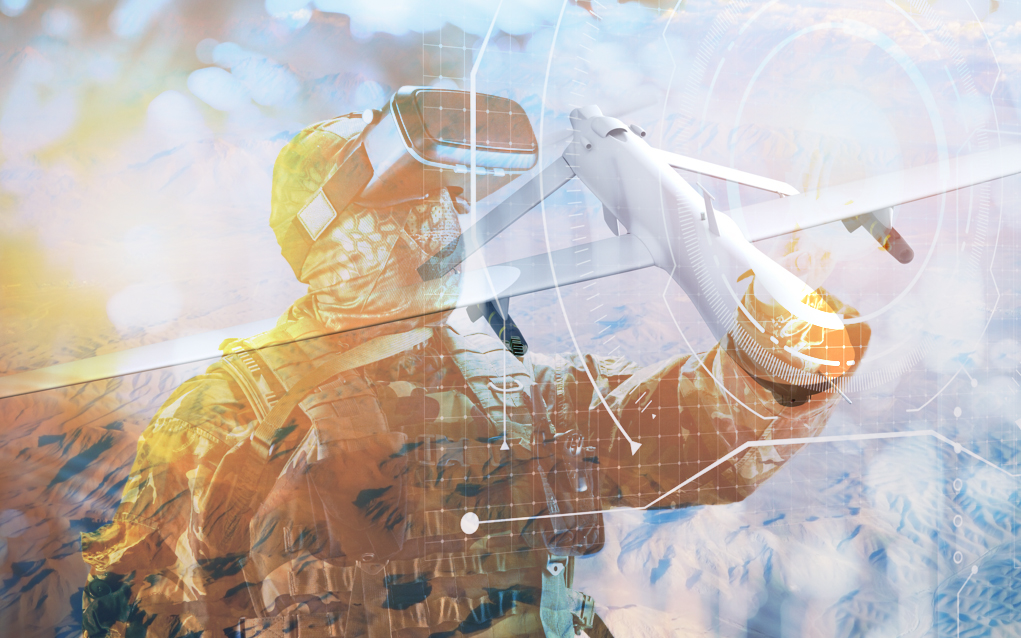
EXECUTIVE SUMMARY:
The US military is creating its own version of the Metaverse.
For years, militaries around the globe have used augmented reality (AR) and virtual reality (VR) to provide weapons training, equipment training and flight training for soldiers. Such tools can reduce costs associated with preparing soldiers for ‘live’ conditions, and lead to stronger outcomes than could be achieved otherwise.
Welcome to next-generation Metaverse tech. Earlier this month, two fighter pilots engaged in a high-altitude, never-before-tested proto-Metaverse experiment. Over the California dessert, in a pair of fighter jets, two skilled pilots donned special augmented reality headsets in order to trial a virtual mid-flight refueling program.
Military and Metaverse
The idea of immersive virtual environments has captured the attention of those in the defense tech and contracting spaces. Proponents are eager to capitalize on the potential and on related development opportunities.
Recently, a mix of augmented reality, artificial intelligence, and video game graphics have also equipped fighter pilots with the ability to trial ‘dogfighting’ against virtual warplanes. Advocates say that the technology offers realistic assessments of pilots’ capabilities, exceeding evaluation precision associated with conventional flight simulators.
Another advantage of the tech is that virtual opponents could be controlled by either a remote individual or by an artificial guide. This allows for practice with a wider array of tactics, techniques and real-world scenarios than previously available.
Military Metaverse & Metaverse-adjacent programs
At present, the US military relies on a series of Metaverse or Metaverse-adjacent virtual reality programs, including the following:
- High-tech helmets for new F-35 fighter jets
- Project BlueShark, which allows sailors to operate vessels
- Project Avenger, which is used to help train US Navy pilots
- VR to assist with chronic pain and post-traumatic stress in Veteran’s hospitals
DARPA insights: VR/AR development
According to a US Defense Advanced Research Projects Agency (DARPA) program manager, the real value of exploring Metaverse-like technologies exists at the true intersection of the physical and virtual worlds. Right now, the Metaverse is largely virtual. Greater complementarity between virtual spaces and physical spaces will increase perceptual capabilities and enable advanced operations (think AR).
However, past efforts to blend worlds have seen challenges. For example, a leaked Microsoft memo about a $22 billion contract suggested that development of the US Army’s version of the HoloLens AR headset wasn’t unfolding as planned. A corresponding Department of Defense audit indicated that the US Army might abandon the deal altogether.
What’s next?
For many, Metaverse development hurdles aren’t a deterrent. They are merely speed bumps within the context of the ‘fail fast, fail forward’ mentality. Developers and product designers will learn through trial, error and experience; the business products will eventually operate as intended.
Professor Sorin Adam Matei, a Purdue University professor who has developed virtual battlefield training programs says that the technology needs to be simpler than Metaverse makers imagine. “When you’re out there…[on the battlefield] the last thing you want to worry about is another piece of equipment,” which could fail.
“We need to think a bit more about this Metaverse metaphor – which is powerful but also has limitations.”
…
Common Metaverse Frequently Asked Questions (FAQs)
Is the term “the Metaverse” a misnomer? According to the Harvard Business Review, yes, the term “Metaverse” may be a bit of a misnomer in that the Metaverse is not a single unit. Rather, any business can develop its own virtual world (‘Metaverse’) or partner with another entity to participate in their virtual world.
Who owns the Metaverse? The Metaverse is comprised of a series of virtual reality environments largely crafted by different media, entertainment, and tech companies. While such companies own rights to their respective Metaverse environments, they relinquish a certain degree of control when it comes to what unfolds within those environments, as users typically govern their own Metaverse interactions.
You might say that businesses are legally liable for Metaverse spaces, but that individuals own their virtual identities and their virtual actions within those spaces.
Is the Metaverse safe? At present, one of the biggest risks within virtual reality environments is data security and privacy. Another major concern relates to child-safety. While business groups are working to address such issues, the current Metaverse landscape comes with distinctive risks.
Will brands need to manage their presence in the Metaverse? For brands that leverage the Metaverse, yes. The Metaverse presents both reward and risk, in much the same way as social media platforms.
However, some brands will own a Metaverse/virtual world created to explicitly serve specific end-goals (ex. The Walt Disney Company has created its own Metaverse/virtual environment), while other brands will ‘inhabit’ the virtual worlds created by third-party media, entertainment or tech firms. Exact brand management needs will correspond to the level of immersion and engagement that a brand intends for, receives, and perpetuates in the Metaverse.
How are executives responding to the Metaverse concept? According to the majority of respondents to an Accenture survey, 42% believe that the Metaverse will function as a “breakthrough” or be “transformational” and 71% of respondents say that the Metaverse is likely to have a positive overall business impact.
For more Metaverse insights, please see CyberTalk.org’s past coverage. Lastly, to receive more cutting-edge cyber security news, best practices and analyses, please sign up for the CyberTalk.org newsletter.

